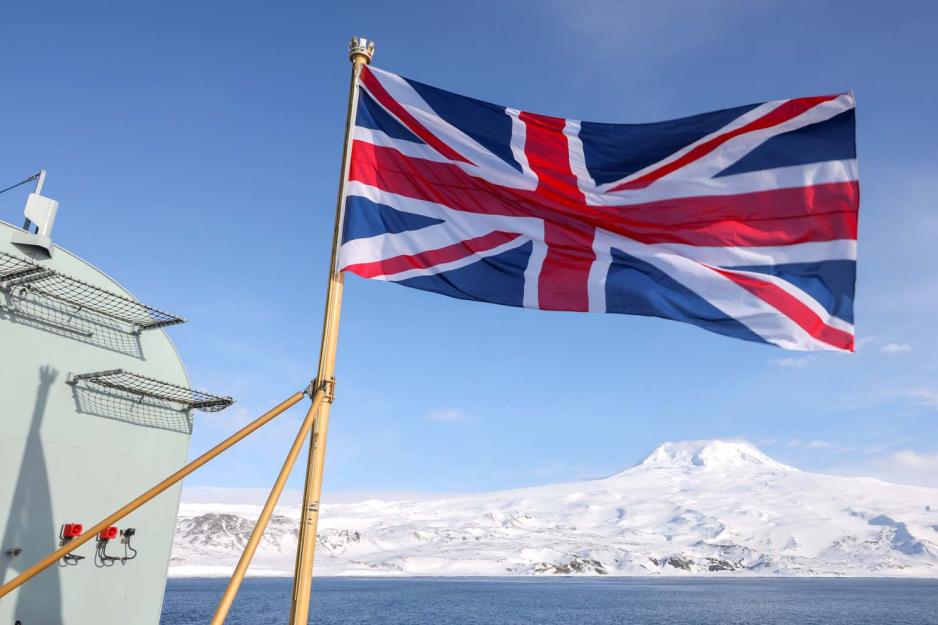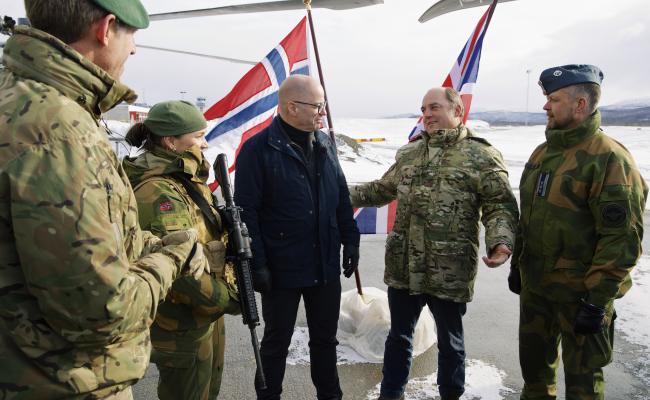UK Releases Updated Arctic Policy Incorporating New Realities Of Russia’s Invasion of Ukraine

Aircraft carrier HMS Prince of Wales visiting the remote Norwegian Island of Jan Mayen in April 2022. (Source: Royal Navy)
The UK updated its Arctic framework transitioning from a low-tension environment to a region which faces greater competition and geopolitical interests.
The United Kingdom released an updated Arctic policy framework, which builds on the country’s 2021 Integrated Review and last year’s report on the UK’s defense contributions in the High North.
Rather than a fundamentally new approach, this latest update represents an incremental change adjusting the UK’s positions to the changed realities in the region following Russia’s attack on Ukraine in 2022.
“The third iteration of the UK’s Arctic Policy Framework is more evolution than revolution in terms of the UK’s approach to the Arctic both as region and policy space,” explains Professor Klaus Dodds, Executive Dean for the School of Life Sciences and Environment at Royal Holloway University.
“What has changed, and the policy framework acknowledges it, is the operating framework,” he continues.
“After Russia’s full scale invasion of Ukraine, the aura of the Arctic as a circumpolar region of peaceful engagement and knowledge networks has dimmed.”
Also read
The new report outlines the country’s positions in four main areas: partnerships and collaboration within the Arctic Council, bilaterally and multilaterally, the protection of the environment and Arctic peoples, ensuring security and stability in the region, and economic opportunities.
End to low tension environment?
As the Arctic “closest neighbor” the UK sees itself with legitimate interests for the region’s environment, security, and prosperity.
The new framework emphasizes how Russia’s illegal invasion of Ukraine has fundamentally shifted the region away from a low tension environment and has undermined the peaceful cooperation of the Arctic Council, to which the UK is an observer state.
“Russia’s invasion of Ukraine on 24 February 2022 changed the context for UK-Russia cooperation on Arctic issues,” the report states.
Climate change and the melting of sea ice underpins a lot of the new challenges and opportunities in the region with access to resources and new shipping routes increasing geopolitical interests and competition in the region.
A clear statement of what success looks like.
During the launch event of the updated framework, Lord Goldsmith, Minister of State with responsibility for the polar regions elaborated that the UK “will be an active, reliable and influential partner in the Arctic – at a time of heightened geopolitical tension and with climate change posing an existential threat to the region as we know it.”
The country will deploy its scientific, diplomatic and military strengths to work toward a “green and stable Arctic.”
Larger role for NATO
The UK also sees Finland and Sweden’s [pending] accession to NATO as key to underscoring the bloc’s interests and capabilities in the region. Building on previous NATO exercises, such as Trident Juncture and Cold Response the UK is looking for NATO “to take a more proactive long-term approach to the High North.”
The UK also highlighted that NATO must defend and preserve the alliance member’s freedom of navigation, including in the Arctic.
By and large the updated framework holds few surprises, Dodds says.
“What you will not discover in the policy framework is a clear statement of what success looks like alongside key performance indicators. The policy framework remains high-level (“we will”) and should not come as a surprise to any close Arctic state partners.”
As a side note and concluding remark Dodds pointed out that “eagle-eyed readers will notice throughout the publication that we only see images of people’s backs, never their faces. You can of course speculate on why that might be so."




